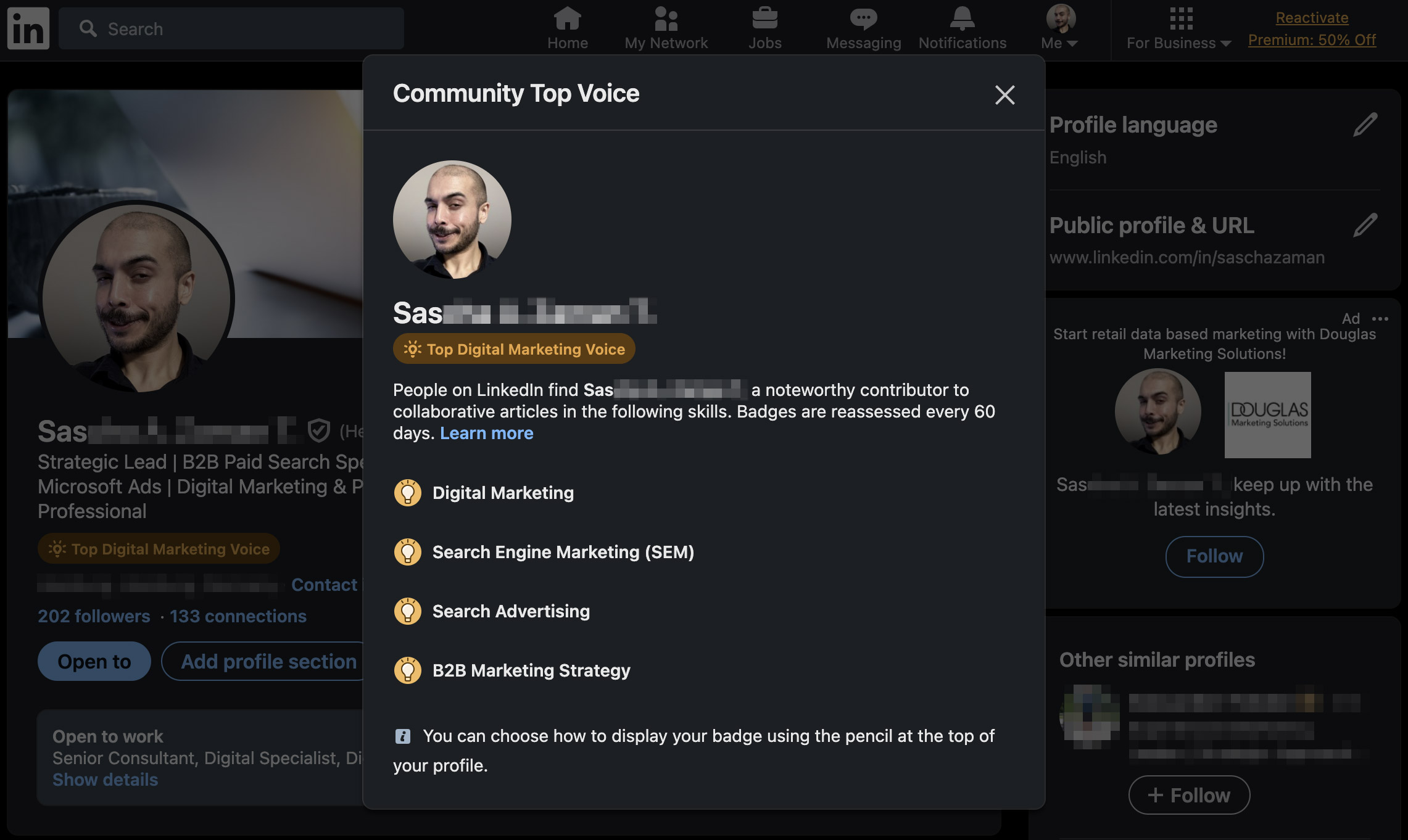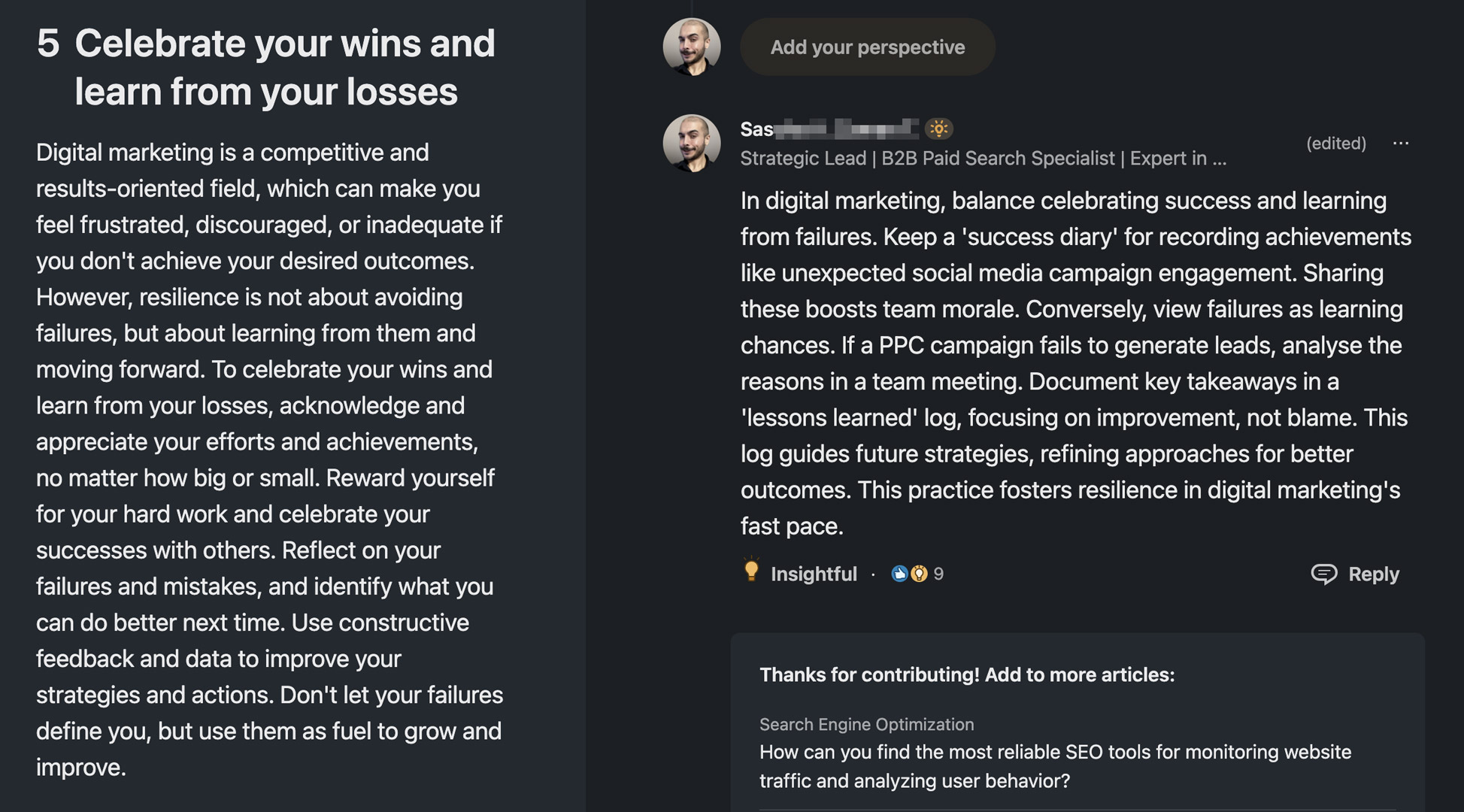A little over half a year ago, I made a rant video about LinkedIn, and I still stand by everything I said in that video. Absolutely. However, I did realise that I might not have invested enough time into LinkedIn as a social media platform. To address this and possibly change my opinion of LinkedIn, I decided to conduct a small experiment.
Introduction to the LinkedIn Top Voice Experiment
The experiment was structured as follows: I planned to actively engage with LinkedIn by creating valuable posts and contributing to various Pulse collaboration articles. The idea was to initially post once in the first week, and then gradually increase the frequency to twice a week. Alongside these posts, I aimed to contribute to over ten different sections of Pulse articles, targeting at least two contributions daily, often reaching up to five daily. The purpose was to see if this increased activity and contribution would lead me to earn a “LinkedIn Top Voice” badge, and to observe the impact on my profile’s visibility and engagement.

The sole goal of this experiment was to obtain a badge for my profile, specifically a Community LinkedIn Top Voice badge. There are two types: the blue LinkedIn Top Voice badge, selected by the LinkedIn Editorial Team for senior-level experts, even though ‘experts’ might be a stretch, and the gold, which is really orange if anything, Community Top Voice badge, awarded for noteworthy contributions to collaborative articles. I, of course, went for the latter, as I haven’t figured out just yet how to game the system for the blue one, which includes manual reviews and selections, making it an invitation only kind of thing. One day maybe. Like and subscribe if you want to see that one happen as well… actually, this isn’t a YouTube video.
Without spoiling what’s coming up; I can tell you now, it doesn’t really help. So whatever you take away from this video, please don’t think you need to waste time on this, because you genuinely don’t. If, like me, you enjoy little bells and whistles that are essentially meaningless but somewhat exclusive, and you like to show them off, then yes, wasting time will be necessary. But hey, at least it’s free. As for how to get a “LinkedIn Top Voice” badge, it’s quite straightforward for the Community Top Voice badge. All you have to do is make “quality” contributions to LinkedIn articles, which are, from what I understand at least, largely generated by AI and known as “Pulse” articles. The articles read like stale bread and the “quality” contributions usually add as much as having a senior key account manager on any project does; nothing. Whatever the case, this seemed like a very attainable little project.

Execution and Observations
The experiment itself was also rather straightforward. I began by creating content, initially focusing on posts that I thought would be “valuable”. The strategy was to post once in the first week and then increase the frequency to twice a week. I created these posts in advance, which allowed for easy scheduling and ensured I wouldn’t be scrambling at the last minute. Each post was carefully crafted. I started with an outline, gathered resources, and then used ChatGPT to help synthesise my thoughts into cohesive pieces. While the content was generated by AI, I made sure to mould it into something I was comfortable with, feeding my final edits back into ChatGPT for feedback to make sure it still made sense.
But let’s be crystal clear about this, the content was mostly fluff. There wasn’t much, if any substance in my posts. At the same time, and daily for that matter, I contributed to over ten different sections of various Pulse collaboration articles, aiming to make at least two contributions daily. I often ended up making five on average. It’s important to note the difference here: “posts” are akin to status updates or tweets and go straight into your feed, though the character limit is quite generous in comparison. Contributions, on the other hand, are added to the aforementioned collaborative articles. While my primary focus was on contributions, I also made regular posts to make my profile appear more active in general and less spammy looking. It was a balancing act between making contributions and maintaining an authentic presence on my profile, which probably wasn’t even necessary.
Results and Insights
The impact of my actions was quite noticeable. My Profile engagement saw a significant boost. After my initial post and several contributions to Pulse articles, I gained 42 new followers, and my profile views increased by over 225%. These numbers were a stark contrast to my usual engagement levels. Don’t forget though that my numbers were extremely low to non-existent in the first place however.
Despite the increase in followers and views, the reception of my individual posts varied greatly. Some received a decent number of likes and impressions, while others did not perform as well. I also noticed that the type of content played a role in its reception. Posts about industry-specific topics like demand generation campaigns and landing pages seemed to resonate more with my audience than others. In fact, the one post I made that garnered the most engagement was neither an info dump nor a self-help type. It was actually the post where I bragged about my promotion.

Engagement Tactics
Engagement with the LinkedIn community through comments and interactions played a significant role. I made it a point to like my own contributions as well as those of others on the same page and then also visit their profiles after having liked their contribution. This tactic encouraged reciprocal engagement and further boosted my presence on the platform. It’s important to understand that the keyword is “encouraged” here. This isn’t a like for like scheme, that would most likely get you nowhere. I am talking about a numbers game. For every ten contributions I liked I would get one to three likes back in return. Make sure to not go begging for likes on the platform, if anything that will probably get you reported for spam.
Reflection and Conclusion
Finally, on the 7th of December, just three weeks after I started, I received the coveted “LinkedIn Top Voice” badge. This achievement led me to reflect on the whole process. While the badge itself didn’t seem to offer any tangible benefits, the experiment helped boost my profile’s visibility. It was a reminder that on platforms like LinkedIn, engagement, and visibility often require consistent and strategic effort. In the end, like I said, I stand by everything I said in my original video. I still think LinkedIn is a platform of giving each other a reach around during a circle jerk. Depending on your career path, you might not be able to get around this cesspool, but you certainly don’t need to invest more time into it than is absolutely necessary for your career.
In conclusion, while the badge did not transform my LinkedIn experience or my views on the platform’s value, the experiment provided insights into how LinkedIn’s engagement mechanics work. It reinforced my belief that while these “bells and whistles” like badges might be appealing, they don’t necessarily equate to real value in professional settings. However, the process of earning them can enhance your visibility and engagement on the platform, if that is something you are interested in.

Leave a Reply